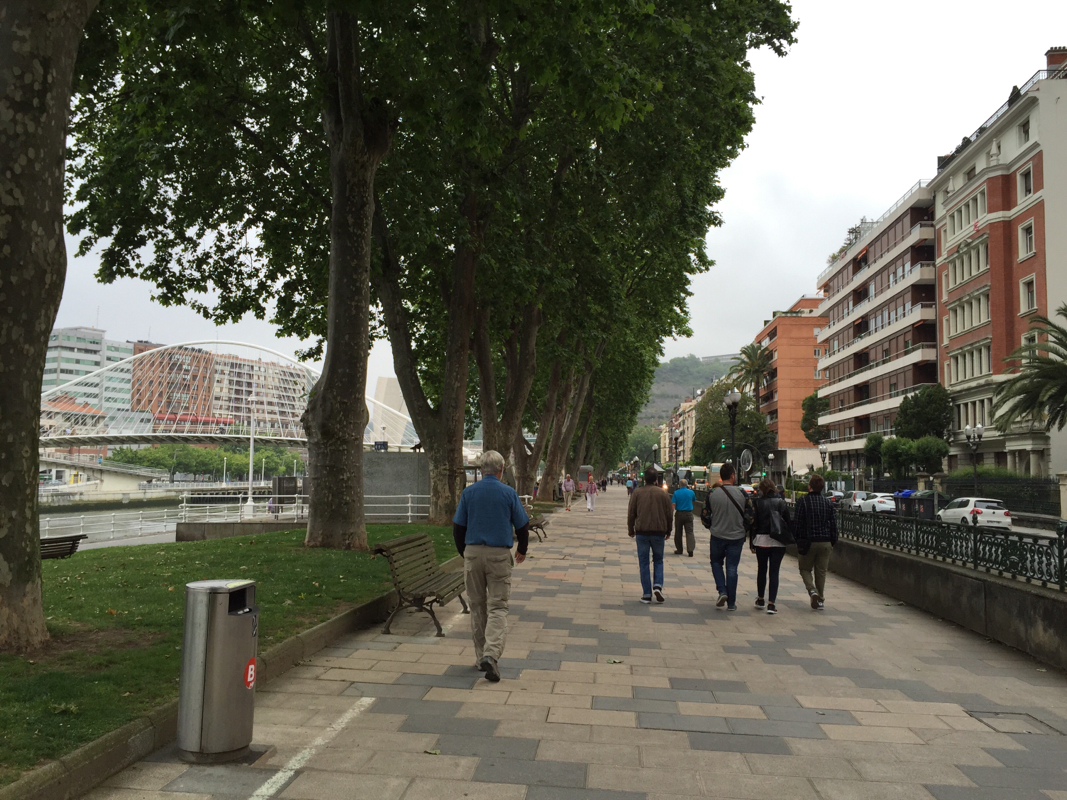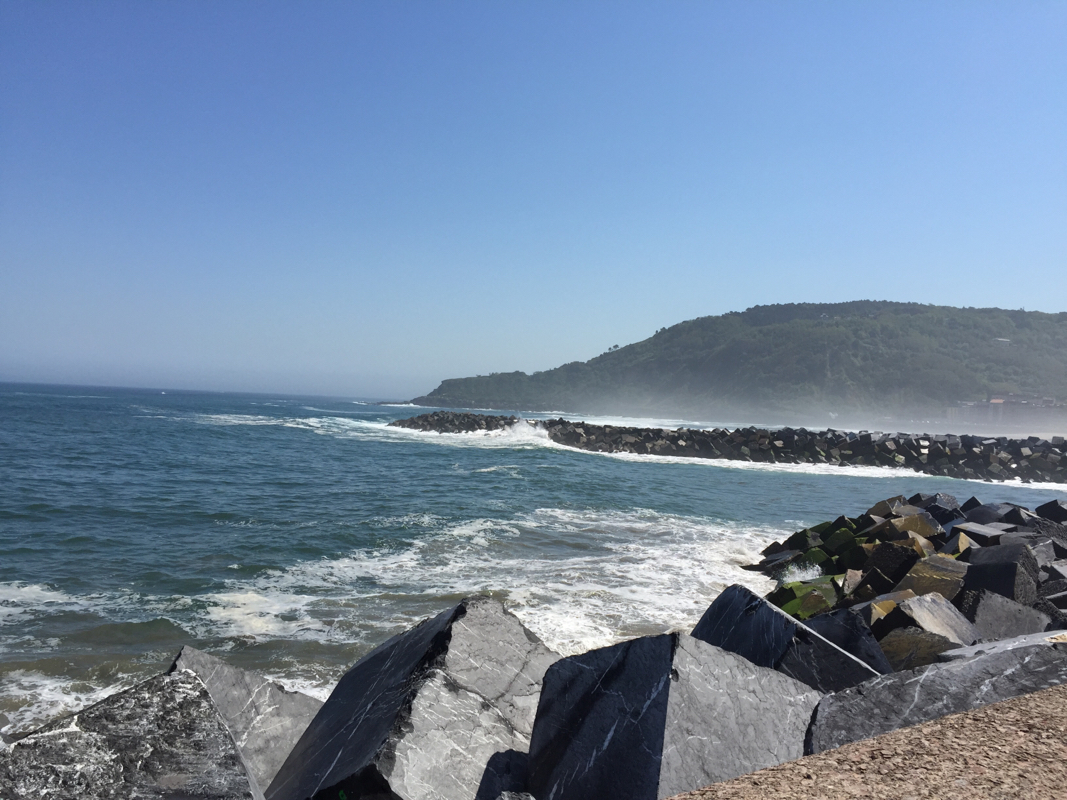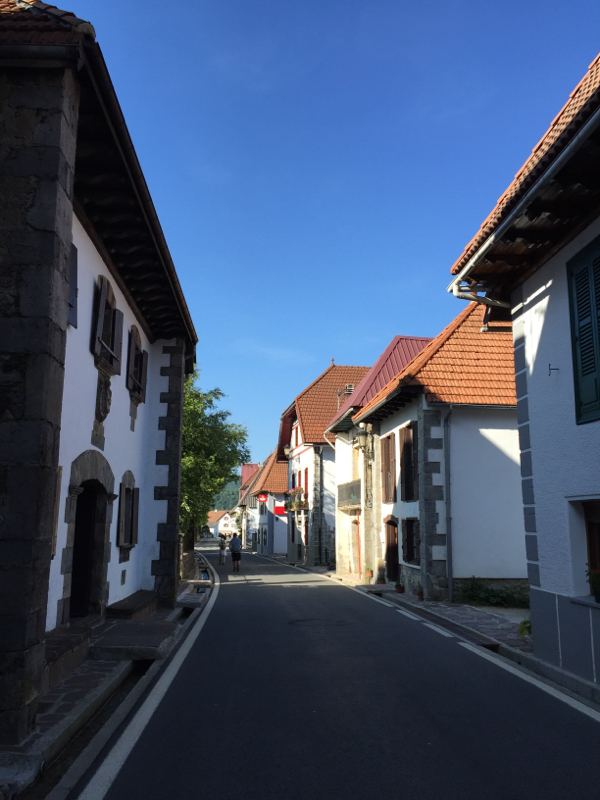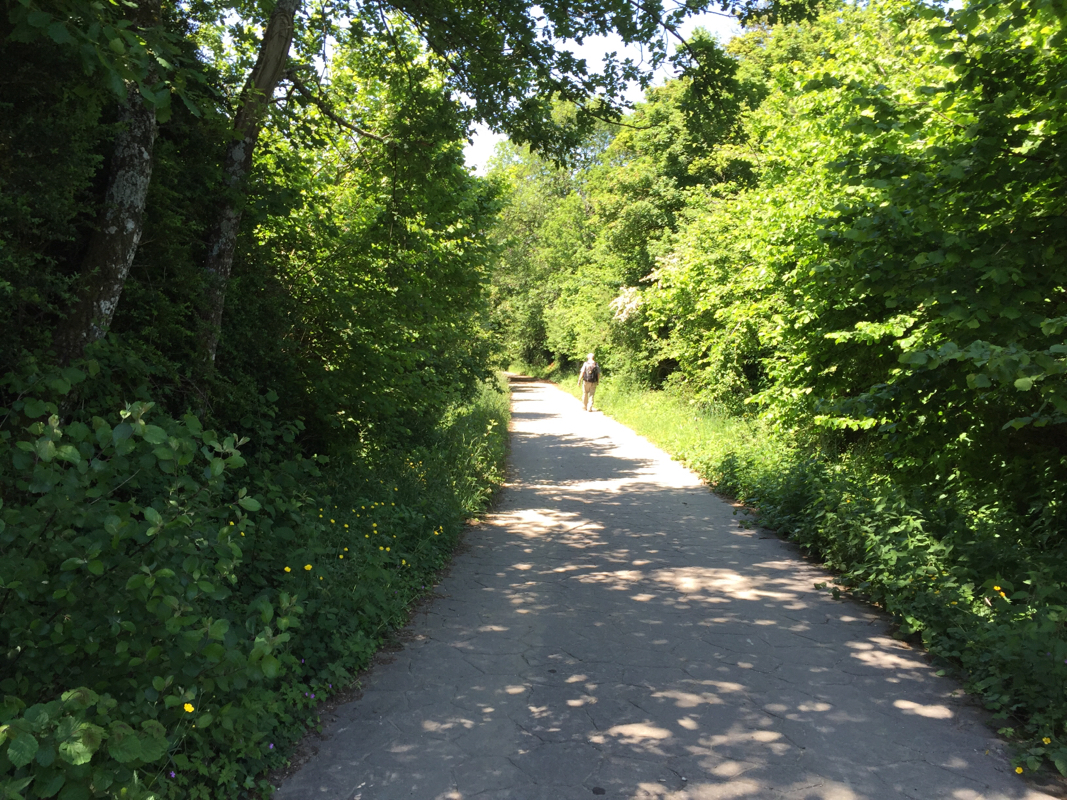|
Our time in Ireland, following the rest day in Pamplona and our side trips to San Sebastian and Bilbao, was wonderful. We had sunny days, good hikes, traditional music, and the excellent company of family. If you would like to read more about our post-Camino trip to Irleand and see photos of the gorgeous, sometimes scary vistas, visit Peg and Russ: Adventures Beyond Time. The photos below are to tempt you over for a visit.
0 Comments
Our final days in Spain were spent in Bilbao. From here we fly to Dublin to meet Pam and James for a week in Doolin on the west coast of Ireland. We enjoyed an afternoon in the Center City of Bilbao after arriving by bus. The ride was scenic through mountains, although not as dramatic mountain passes as we had on the bus ride to San Sebastian a day earlier. Visiting the Guggenheim took most of a day and we really enjoyed it. Everyone had told us that the building was wonderful to see. But we found the exhibits wonderful too. As a bonus, we happened onto a really nice hotel with a spectacular breakfast. In the morning we walked to the airport bus from our hotel, about 20 minutes. It was Sunday. We passed several groups of men who seemed to be just leaving the bars and clubs at 7:30AM. As we waited with one other couple at the bus stop, we were entertained by a gaggle of club-exiting older teens. It is great to not be that young! We're spending a couple of days in Pamplona, San Sebastián, and Bilbao, before flying over to Ireland for a new adventure. The Irish part was facilitated by our finding fairly cheap flights that took us through Dublin. We had hoped to walk a few more days in Spain, but temperatures in the 90's helped us to change our minds--not that a few moe days in Basque Country can be considered a hardship. Impressions: 1- The French countryside between Moissac and St. Jean Pied du Port was beautiful, and we got wonderful food. A complaint is the relative scarcity of accommodations, and an apparent unwillingness to get into the "spirit" of the Camino (but see below). 2- St. Jean, and particularly Roncesvalles were crawling with would-be pilgrims. Accommodating hundreds in a newly renovated albergue, overflow guests were forced to sleep in boxes--the kind of containers carried on flatbed trucks and sometimes used for construction offices. At dinner we were shuffled out early to make room for the second shift. With notable exceptions, the remainder of our time of walking on the Camino in Spain was characterized by crowding and impersonal service. We were reminded of the term "industrial tourism" coined by Edward Abbey. We wished we were back in France, despite its shortcomings. 3- What to do? Despite its abundant services and incomparable spiritual touchstones, the Camino Frances may be being spoiled by success. Though we've enjoyed the Via de La Plata, the Ruta Portuguesa, and the Voie de La Puy, none is quite lik the Via Frances--the way it used to be. Enjoying Pamplona too much to move on, but wanting to experience more of the region, we took a day trip by bus to San Sebastion, based on Juan-Carlos' strong recommendation. Great decision! It was beautiful, vibrant, historic, and had the best food. We decided at the last minute to stop walking and stay in Pamplona because of the heat. The decision made for a couple of delightful days of pretending we are locals.
About 12 more miles would bring us to Pamplona. Sun was shining and the temperature was in the 70s all day. It was warm but not hot. We wandered around Larasoano for a while in the early morning seeing the beautiful flowers and stone houses, but not the yellow arrow to show is our way to the Camino and Pamplona. That made it a 13 mile day, but what the heck, it's all about the walking and sights. The trail was along a ridge much of the way the vistas were beautiful. One section, where the trail was narrow and the land dropped sharply off on the left, 3 bicycles came up behind us. We plastered ourselves to the uphill side of the trail. We wondered why they were on that trail at all. They seemed annoyed that we forced them to slow so much that they had to walk their bikes to get by us. A short distance farther along we spotted two bikes lying akimbo against the uphill side and the narrow flat path. A hiker and the two riders were trying to rescue the third rider and his bike which were down the steep embankment. We couldn't help. There was barely space to stand. As we scrambled over the bikes and passed the rescuers, Russ could see the rider, head downhill and leg tangled in the bike frame. Our guess is that the riders got up to speed again and couldn't stop when they came on the walker. We think they passed us about an hour later so apparently all came out okay. When we came down from that section of trail, we were in the Parque Fluvial, a flat paved route all the way into Pamplona. It was no prettier than the ridge or the narrow, goat trail with bikes, but most welcome nevertheless. After Roncesvalles, it seems you ought to be past the Pyrenees but you still must come down through the foothills. You are not really out of them until the big Alto de Pardon hill after Pamplona. Our goal was to walk that far this year. But goals are always soft for us, dependent on whatever. From Viskarette, we planned a 12-mile day to Larasoana and the new Pension Tau. We walked along a ridge much of the day and had some serious steep downhills to test our knees. Our pension was very nice. We had a double room just off the entrance to the house. Our private bathroom was als off the entranceway. I came out of the shower in my underwear to find several new arrivals just coming in. Very European moment. Leaving Roncesvalles, we walked again with our Camino friends Lee and Lorraine whom we met on our first day in Moissac. We walked together off and on all the way. We chose a short, leisurely day of about 9 mIles which would put us in Viskarette. We have plenty of time. We wanted to explore Burguette which played a role in Hemingway's The Sun Also Rises which we recently re-read. We stopped at a cafe next to the Burguette church. Families were gathering for Sunday service. The kids were in traditional Basque clothing, reminding us a bit of the Amish. The Civil Guard arrived and closed the single main road in town for a procession. We walked on to Espinal. In Espinal we were hailed by a local man, Domingo. He has been living in Namibia and teaching math there while trying to encourage more entrepreneurial undertakings by locals. He grew up in a family of 12 children in Espinal. His family always had food because they grew it and had animals. He wants the same for Namibian families. He showed us through his ancestral home. It was a magnificent Camino moment. We arrived in early afternoon, found a bar, and spent a few hours chatting with other pilgrims who wandered in for a rest. That included sisters from Alaska walking with their father's girl friend, who is about our age. Their father had rented a camper and was following along because he could not do the walking. We stayed at a super clean, modern pension called Curazon Pura. We shared a bath and had a large room with twin beds. For dinner they served a fresh garden salad, paella, and Basque cake. Wine, water, and bread included. Breakfast had cereal, hard cooked eggs, toast, juice, coffee. The total cost for the two of us was 38€ (about $44)! Others at dinner were a brother and sister from Norway and a German couple. The conversation in English --- our shared language was lively about places we'd stayed and sights along the way. The brother and sister arrived late enough that all 3 floors of the Roncesvalles albergue were full. They had stayed in overflow "boxes", trailers they described as storage containers! Glad we had cold bunk beds! |
Archives
July 2022
AuthorsPeg and Russ Hall Categories
All
|
- Home
- Blog
- Second Wind
- Maps
- Why Walk It?
-
Practicalities
- Step 1. Planning Your Camino -- What kind, Where, When, How far, Alone, Getting there . . .
- Step 2. Getting Ready -- Training, Packing, Gear, Clothes, Electronics, Passports, TSA . . .
- Step 3. Being There -- Money, Lodgings, Food, Language . . .
- Step 4. Adapting -- Guidebooks, Websites, Trail conditions, Schedule, Water, Weather, Pain, Hazards, Phones . . .
- Step 5. Being a Pilgrim and a Tourist -- Types of pilgrimmage, Roman roads, Medieval life, Wonders . . .
- Step 6. Living the Lessons of the Camino -- Once or again, Connecting at home, Being hospitaleros . . .
- Who Are We?
- All Our Caminos
|
Contact us at: pegandruss@caminodreaming.net |















































 RSS Feed
RSS Feed